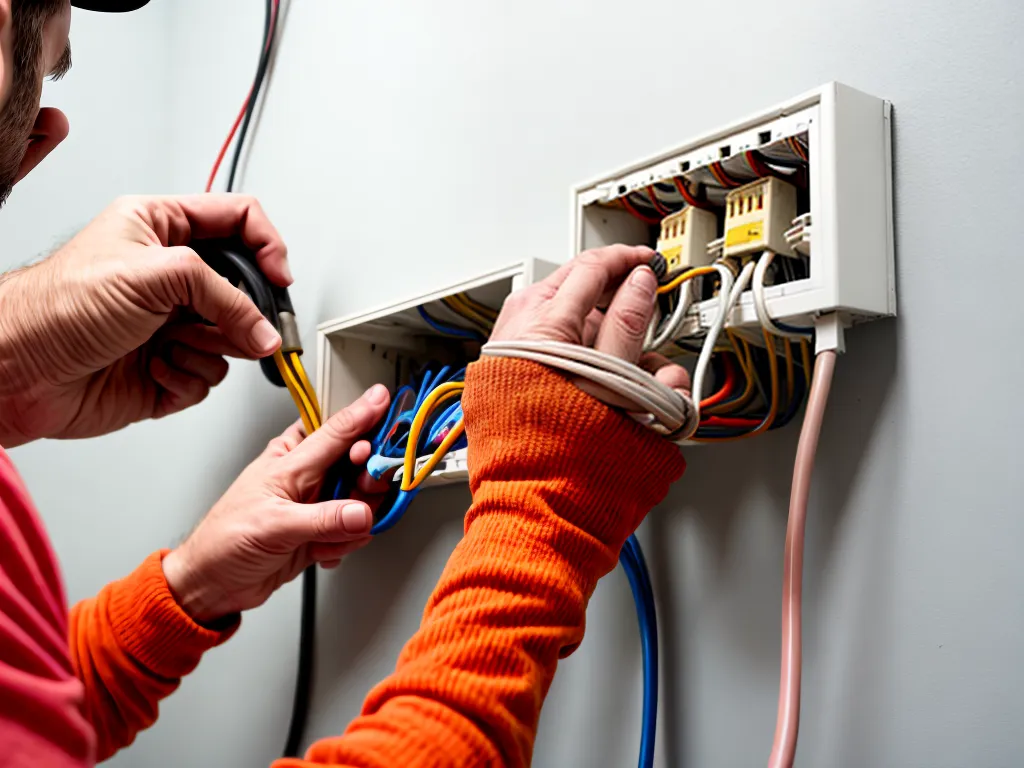
How to Install Home Electrical Wiring to Save Money
Installing electrical wiring in your home can seem daunting, but with proper planning and safety precautions, it can be done safely and affordably. Here is a step-by-step guide on how to install home electrical wiring to save money:
Research Electrical Codes and Permits
The first step is to research your local electrical codes and permit requirements. Electrical codes ensure safety standards are met. Permits are typically required for most electrical work. Failing to pull permits or meet code can risk:
- Safety hazards if work is improperly done
- Fines for unpermitted work
- Issues when selling the home if unpermitted work is discovered
Spend time familiarizing yourself with the National Electrical Code (NEC) and your jurisdiction's specific codes. Contact your local building department to learn about permit needs for your electrical project. Doing this upfront research will ensure your DIY electrical project meets all requirements.
Design and Plan Your Electrical Layout
Next, thoughtfully design and plan the layout of your electrical system. Consider:
- Existing electrical layout and any problems/limitations
- Additional lighting, switches, outlets you want to add
- Where the main service panel is located
- Voltage needs based on appliances/devices being used
- Future electrical needs if adding onto the home
Create a detailed wiring diagram showing all circuits, wire runs, locations of outlets/switches, and connections to appliances/devices. This is crucial for executing a safe, cost-effective installation. Consult an electrician if needed to ensure your wiring plan will work properly. Planning first avoids costly mistakes down the road.
Purchase All Electrical Supplies and Tools
Make a comprehensive list of every supply and tool needed for your electrical project, then purchase them ahead of time. This includes:
- Wire and conduit of proper gauge and type
- Appropriate breakers and connectors
- Junction boxes, receptacles, switches, and other hardware
- Hand and power tools like strippers, cutters, drills, etc.
- Testing equipment - voltmeter, continuity tester, etc.
- Safety gear - glasses, gloves, boots, etc.
Buying in bulk can offer big savings on wire, conduit, boxes, and other supplies. Having all supplies and tools upfront prevents delays and costly mid-project purchases.
Turn Off Power and Install New Wiring
When ready to start, shut off power at the main breaker panel. Verify it is fully off using a non-contact voltage tester. If wiring to the main panel, get the utility company to disable power.
Follow your wiring diagram to methodically install new wiring. Run cables through conduit first, then pull wires through. Follow code for proper wire gauge, connections, junction boxes, and more. Label everything clearly as you go so circuits are identifiable.
Test wires and circuits frequently using a multimeter or tester. Check for continuity, polarity, and grounding. Fix any issues immediately before proceeding. Work slowly and safely.
Connect Devices and Restore Power
With all wiring completed, securely connect devices like receptacles, switches, appliances, and fixtures. Attach cover plates and install fixtures/appliances.
Restore power only after double-checking connections. Turn on breakers systematically, testing each circuit as powered up. Troubleshoot any problem circuits before finishing.
With power restored, do final tests of all lights, receptacles, and equipment. Install insulation and covers on wire runs if needed. Your DIY electrical project is complete!
Executing your own home electrical wiring can be highly rewarding. By understanding electrical codes, planning meticulously, using proper materials and safety gear, and working carefully, you can take control of electrical projects to save significant money versus hiring an electrician. Just be sure to get permits and have an experienced electrician review your work before using your new electrical system.